Type of Steam
Pressure –Temperature Relationship of Water & Steam :
If water is heated beyond the boiling point, it vaporizes into steam, or water in the gaseous state. However, not all steam is the same. The properties of steam vary greatly depending on the pressure and temperature to which it is subject.
Saturated (dry) steam results when water is heated to the boiling point (sensible heating) and then vaporized with additional heat (latent heating). If this steam is then further heated above the saturation point, it becomes superheated steam (sensible heating).
Saturated Steam :
As indicated by the black line in the above graph, saturated steam occurs at temperatures and pressures where steam (gas) and water (liquid) can coexist. In other words, it occurs when the rate of water vaporization is equal to the rate of condensation.
Advantages of using saturated steam for heating :
Saturated steam has many properties that make it an excellent heat source, particularly at temperatures of 100 °C (212°F) and higher. Some of these are:
Wet Steam :
This is the most common form of steam actually experienced by most plants. When steam is generated using a boiler, it usually contains wetness from non-vaporized water molecules that are carried over into the distributed steam. Even the best boilers may discharge steam containing 3% to 5% wetness. As the water approaches the saturation state and begins to vaporize, some water, usually in the form of mist or droplets, is entrained in the rising steam and distributed downstream. This is one of the key reasons why separation is used to dis-entrain condensate from distributed steam.
Dry steam :
Dry Steam is saturated steam that has been very slightly superheated. This is not sufficient to change its energy appreciably, but is a sufficient rise in temperature to avoid condensation problems, given the average loss in temperature across the steam supply circuit. Towards the end of the 19th century, when superheating was still a less-than-certain technology, such steam-drying gave the condensation-avoiding benefits of superheating without requiring the sophisticated boiler or lubrication techniques of full superheating.
Superheated Steam :
Superheated steam is created by further heating wet or saturated steam beyond the saturated steam point. This yields steam that has a higher temperature and lower density than saturated steam at the same pressure. Superheated steam is mainly used in propulsion/drive applications such as turbines, and is not typically used for heat transfer applications.
Advantages of using superheated steam to drive turbines :
- To maintain the dryness of the steam for steam-driven equipment, whose performance is impaired by the presence of condensate
- To improve thermal efficiency and work capability, e.g. to achieve larger changes in specific volume from the superheated state to lower pressures, even vacuum.
It is advantageous to both supply and discharge the steam while in the superheated state because condensate will be generated inside steam-driven equipment during normal operation, minimizing the risk of damage from erosion or carbonic acid corrosion. In addition, as the theoretical thermal efficiency of the turbine is calculated from the value of the enthalpy at the turbine inlet and outlet, increasing the degree of superheating as well as the pressure raises the enthalpy at the turbine inlet side, and is thereby effective at improving thermal efficiency.
Disadvantages of using superheated steam for heating :
For these reasons and others, saturated steam is preferred over superheated steam as the heating medium in exchangers and other heat transfer equipment. On the other hand, when viewed as a heat source for direct heating as a high temperature gas, it has an advantage over hot air in that it can be used as a heat source for heating under oxygen-free conditions. Research is also being carried out on the use of superheated steam in food processing applications such as cooking and drying.
Flash Steam :
The term ‘Flash Steam’ is traditionally used to describe steam billowing from condensate receiver vents and open-ended condensate tanks and discharge lines from steam traps.
A phenomenon caused, when hot condensate passes, from a high pressure system to a low pressure system. It happens instantaneously, virtually in a Flash, hence the name Flash steam.
Often mistaken as live steam leaking and a reflection on Trap condition.
How is Flash Steam Formed?
The case where the high pressure condensate temperature is higher than the low pressure saturation temperature
Flash steam occurs whenever water / condensate at high pressure and at a temperature that is higher than the saturation temperature at low-pressure discharge, is allowed to drop to the lower pressure. Conversely, if the temperature of the high-pressure water is lower than the saturation temperature at the lower pressure, flash steam cannot be formed. In the case of condensate passing through a steam trap; it is usually the case that the upstream temperature is high enough to form flash steam.
Consider a kilogram of condensate at 7 bar-g and a temperature of 169.6OC (saturation temp) passing through a steam trap and thus exposed to a lower pressure of 1.0bar-g.
The amount of energy in one kilogram of condensate at saturation temperature at 7.0bar-g is 171 kCal.
In accordance with the First Law of Thermodynamics, the amount of energy contained in the fluid upstream and downstream of the trap must be equal, as per the principle of conservation of energy.
Consequently, the heat contained in one kilogram of fluid downstream of the trap [1.0 Bar-g] is also 171 kCal. However, water at 1.0bar-g is only able to contain 120 kCal of heat (sensible heat at saturation temp & 1.0bar-g pressure), subsequently there appears to be an excess in heat on the upstream side by 171 – 120 = 51 kCal.
This excess heat is then used as enthalpy of evaporation resulting in part of condensate quantity again converting into steam referred to as Flash Steam and this process is known as flashing.
The amount of flash steam produced at the Lower / downstream / final pressure (P2) can be determined using the Equation:
Where :
P1 = Initial pressure (higher pr)
P2 = Final pressure (lower pr)
hf = Liquid enthalpy/Sensible heat (kCal/kg)
hfg = Enthalpy of evaporation / Latent Heat (kCal/kg)
Example - 1 :
Consider a quantity of water at a pressure of 7.0bar-g, containing 171 kCal/kg of heat energy at its saturation temperature of 169.6OC.
If the pressure was reduced to 1.0bar-g pressure, the water could only exist with 120 kCal/kg of heat energy. This difference of 171 – 120 = 51 kCal/kg of heat energy, would then produce flash steam at atmospheric pressure.
Proportion of flash steam = (171-120)x100/526.2 = 9.7% (9.7 Kg flash steam per 100 kg condensate)
The proportion of flash steam produced can be thought of as the ratio of the excess energy to the enthalpy of evaporation at the final pressure.
Example - 2 :
Consider the same conditions, with the exception that the high-pressure condensate temperature is at 90OC that is, sub-cooled below the saturation temp at 1.0bar-g of 120OC.
Note: It is not usually practical for such a large drop in condensate temperature from its saturation temperature (in this case 169.6OC to 90OC); it is simply being used to illustrate the point about flash steam not being produced under such circumstances.
In this case one kilogram of condensate at 7.0bar-g pressure and 90°C temp is 90 kCal. As this enthalpy is less than the enthalpy of one kilogram of saturated water at 1.0bar-g pressure (120 kCal), there is no excess heat available to produce flash steam. The condensate simply passes through the trap and remains in a liquid state at the same temperature but lower pressure, atmospheric pressure in this case.
The vapor pressure of water at 90OC is 0.7 bar-g absolute. Should the lower condensate pressure have been less than this, flash steam would have been produced.
The Principles of Conservation of Energy and mass between two process states :
1 kg of condensate at 7.0bar-g and 169.6°C produces 0.097 kg of flash steam at 1.0bar-g pressure.
The total mass of flash and condensate remains at 1 kg.
The principle of energy conservation states that the total energy in the low pressure state must equal the total energy in the high pressure state.
Therefore, the amount of heat in the flash steam and condensate must equal to 171 Kcal, that in the initial condensate.
Steam tables give the following information :
Total enthalpy of saturated water at 1.0bar-g pressure (hf) = 120 kCal/kg
Total enthalpy in saturated steam at 1.0bar-g pressure (hg) = 646.2 kCal/kg
Therefore, at the lower pressure state of 1.0bar-g,
Total enthalpy in the water = 0.903 kg X 120 kCal / kg [A] = 108.36 kCal/kg
Total enthalpy in the steam = 0.097 kg X 646.2 kCal / kg [B] = 62.68 kCal/kg
Total enthalpy in condensate and steam at the lower pressure = A + B = 171 kCal/kg
Therefore, according to the steam tables, the enthalpy expected in the low pressure state is the same as that in the high pressure state – the principle of conservation of energy.

 Aerated Concrete Block Industry
Aerated Concrete Block Industry  Brewery Industry
Brewery Industry 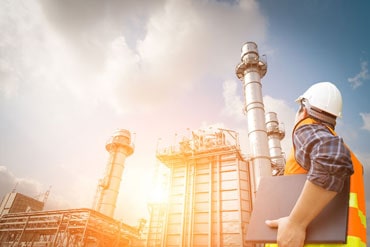 Captive Cogen Industry
Captive Cogen Industry 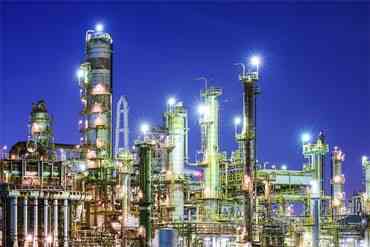 Chemical Industry
Chemical Industry  Dairy Industry
Dairy Industry 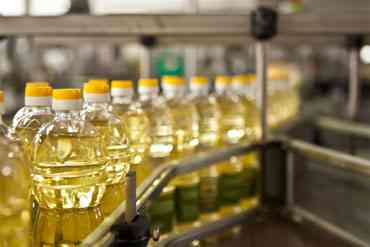 Edible Oil Industry
Edible Oil Industry 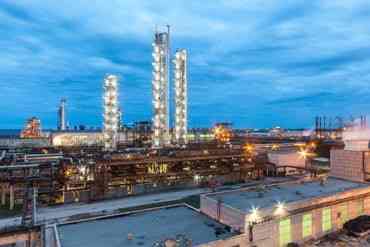 Fertilizer Industry
Fertilizer Industry  Hotel Industry
Hotel Industry 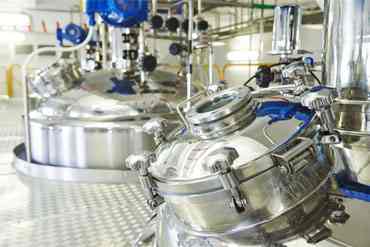 Pharma Industry
Pharma Industry 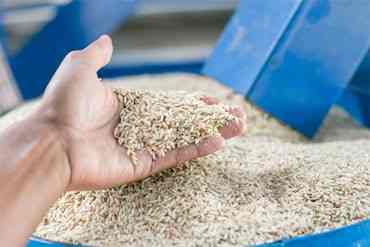 Rice Industry
Rice Industry 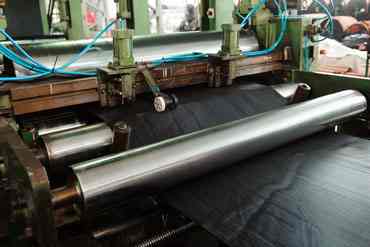 Rubber Industry
Rubber Industry  Soap Industry
Soap Industry 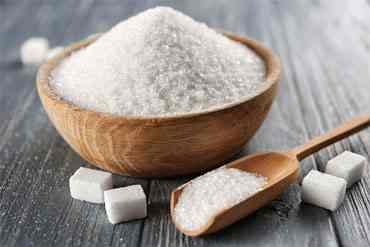 Sugar Industry
Sugar Industry  Textile Industry
Textile Industry  Tyre Industry
Tyre Industry